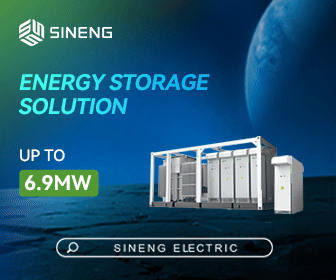Energy Storage Firms Face Up to Growing Pains in Booming US Battery Market
Global energy storage firms pivoting towards the US battery market on the back of the transformational Inflation Reduction Act (IRA) are facing up to scaling constraints on battery supply and access to skills, while hopeful that external intervention will ease interconnection queues and policy uncertainty.
In its industry insight report, Taking Charge: Inside the US Battery Boom, US law firm Troutman Pepper finds that while firms are accelerating their US battery storage plans in the wake of the IRA, they are nonetheless alive to the market ‘growing pains’ that lie ahead.
The report reflects upon the views of a range of market actors involved in funding, developing, advising, and operating US battery storage assets. With current constraints on battery supply and workforce set to compound further amid a rapidly scaling sector, these commentators have identified short-term fixes while the longer-term solutions set out in the IRA take hold. They include competing for battery supply from Asian manufacturers while US battery gigafactories are developed, and making greater use of external consultants to ease capacity bottlenecks on early-phase project development.
The market is also optimistic that intervention from the Federal Energy Regulatory Commission and the Department of Treasury will address respectively the growing challenge of interconnection queues and questions over how certain key elements of the IRA, such as tax credit transferability, will work in practice.
The fact these market growing pains are compounding tells its own story regarding the positive global industry reaction to the IRA. Less than six months after it became law, the US Energy Information Administration reported a steep increase in battery storage projects under development, with the 26.5GW of pipeline capacity it recorded in February, up 58% on the pre-IRA figure, expected to expand further throughout 2023.
Troutman Pepper’s report argues that the introduction of an investment tax credit (ITC) for standalone battery storage projects is the single biggest catalyst behind this growth. As well as triggering an influx of newly viable storage projects to the market, this move has brought developers greater flexibility across their entire portfolios, encouraged higher installed capacities, and started to create a ‘buyer’s market’ for investors.
John Leonti, Partner and Co-leader of the Energy Industry Group at Troutman Pepper, commented: “We’ve been active in the US energy storage sector for over a decade, so are well aware of the industry’s current buoyancy. But we’ve also seen how rapid growth in the development pipeline post-IRA has placed even more stress on the supply chain.
“Collaboration is a well-worn industry motto, but it really does sit at the heart of battery storage’s path to success in the US. The market needs fine-tuned specialist expertise to demonstrate that it’s possible to act smartly and quickly, without acting in haste. It’s heartening to find, through this report, that optimism in the market remains high, and we look forward to the challenges that will accompany the sector’s success.”
The report concludes with Troutman Pepper’s forecast of five post-IRA investment trends expected to shape the sector in the years ahead:
1. Significant inward investment into the US battery sector from established renewables markets in Europe, Asia, and South America will also bring expertise to build the integrated battery supply chain in North America.
2. Battery developers and investors in the US will be exposed to trade disputes between the US and China. They will turn to the solar sector for lessons in handling such short-term volatility.
3. Standalone storage may be grabbing the headlines but there will be plenty of activity in the co-location space, especially with the addition of battery storage to operational wind and solar projects.
4. Large institutional investors will enter the tax credit market on the back of tax credit transferability measures. This will change the due diligence dynamic for projects.
5. Utility-scale battery storage projects are booming under the IRA but, in time, investors will begin to look at how they can apply the IRA rules to projects with emerging long-duration storage technologies.
Taking Charge: Inside the US Battery Boom can be downloaded here.
Troutman Pepper | troutman.com.









